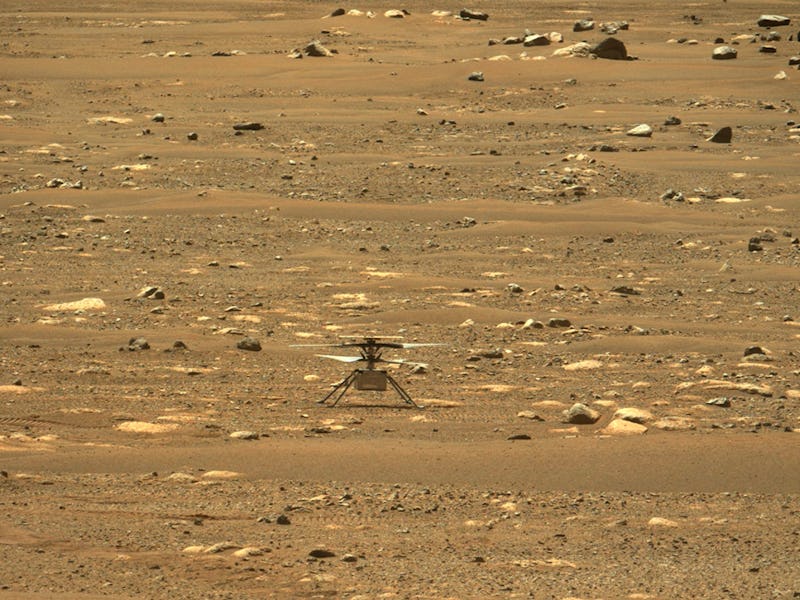Ingenuity helicopter next flight: NASA isn't done with the Mars copter
The short but successful flight will set the stage of future exploration of other planets. But what happens to Ingenuity now?

NASA’s Ingenuity helicopter just went where no other aircraft has gone before.
The 19-inch-tall helicopter flew from the surface of Mars, marking humanity’s first powered, controlled flight on another planet. Those 39.1 seconds of flight set the stage for a new way to explore Mars — and worlds beyond.
Ingenuity is set to take on at least four more test flights on the Red Planet over the next month as engineers start to think of developing future aircraft beyond Earth. Here’s what you need to know about the Mars helicopter’s future plans.
The first flight took place at around 3:30 a.m. Eastern. Ingenuity lifted off about 10 feet from the Martian ground, hovering for about 30 seconds. The helicopter then descended and landed once more on the planet’s rocky surface, with the entire flight lasting for fewer than 40 seconds.
Are there more flights for the Mars helicopter Ingenuity?
Monday was the first of a series of test flights planned for Ingenuity.
Over the course of 30 Martian sols, a team of NASA engineers will test out Ingenuity's ability to fly. (A sol is the equivalent of a day on Mars, lasting about 40 minutes longer than a day on Earth.)
The Perseverance rover dropped off the Ingenuity helicopter on Mars and watched it fly for the first time.
MiMi Aung, Ingenuity Mars Helicopter project manager at NASA’s Jet Propulsion Laboratory, said in a briefing after the flight that the goal of the Ingenuity helicopter is to deliver data to the engineers designing future generations of helicopters destined for Mars.
“Beyond this first flight, over the next coming days, we have up to four flights planned — and increasingly difficult flights, challenging flights — and we are going to continually push all the way to the limit of this rotorcraft,” Aung said.
The helicopter could fly for up to 90 seconds at a height of 10 to 15 feet, traversing distances of almost 980 feet horizontally in that time.
Ingenuity isn’t built to sustain the harsh Martian environment for long, so after the 30-day period, Perseverance will leave its companion behind to die.
What’s next for Ingenuity?
Although brief, those flights are meant to help space engineers understand whether or not it is possible to explore Mars from an aerial perspective.
NASA has landed five rovers on the surface of Mars, the latest one about the size of an SUV that roams around the surface of Mars on its four wheels. But being able to send a helicopter to Mars would give scientists a new perspective on the Red Planet. Subsequent helicopters will carry a suite of instruments, whereas Ingenuity has just a camera aboard.
And even beyond Mars, engineers are eyeing a few worlds in our Solar System with a substantial atmosphere that could support aerial flight. There’s already a proposed mission to Saturn’s moon Titan, and of which NASA has performed some modeling if helicopter flight might work on Venus, though its intense heat could kibosh near-term plans.
Titan has a thick atmosphere, in addition to showing signs of potential habitability that makes it an ideal destination for future exploration.
“This is exactly the way we build the future,” Michael Watkins, JPL director, said at the press conference. “I think you'll hear a lot more about the scientific promise of the rotorcraft on Mars as part of other planets, and as part of the Science Mission Directorate portfolio.”
This article was originally published on